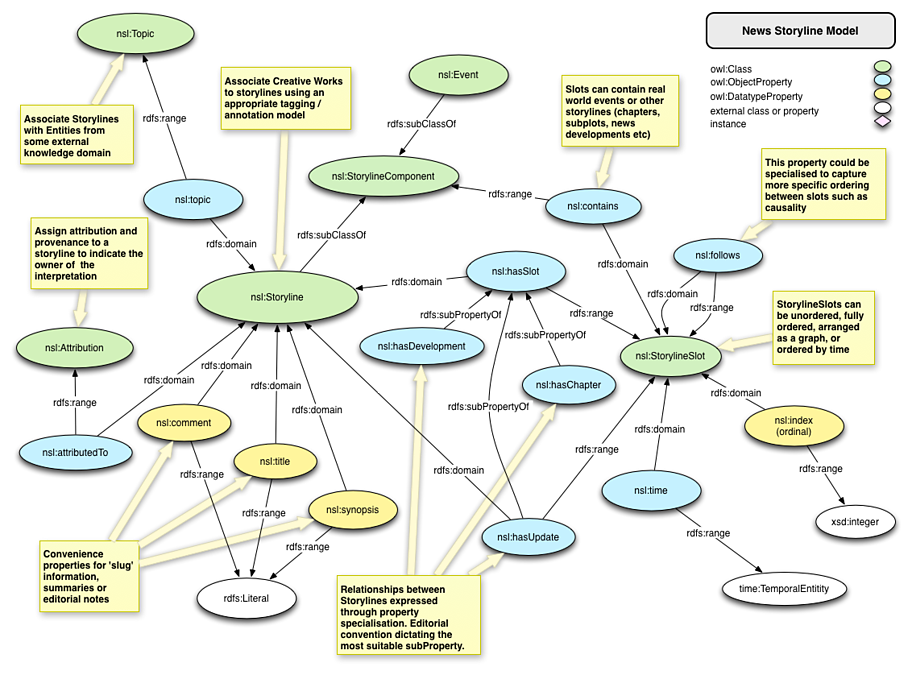From the post:
The News Storyline Ontology is a generic model for describing and organising the stories news organisations tell. The ontology is intended to be flexible to support any given news or media publisher’s approach to handling news stories. At the heart of the ontology, is the concept of Storyline. As a nuance of the English language the word ‘story’ has multiple meanings. In news organisations, a story can be an individual piece of content, such as an article or news report. It can also be the editorial view on events occurring in the world.
The journalist pulls together information, facts, opinion, quotes, and data to explain the significance of world events and their context to create a narrative. The event is an award being received; the story is the triumph over adversity and personal tragedy of the victor leading up to receiving the reward (and the inevitable fall from grace due to drugs and sexual peccadillos). Or, the event is a bombing outside a building; the story is an escalating civil war or a gas mains fault due to cost cutting. To avoid this confusion, the term Storyline has been used to remove the ambiguity between the piece of creative work (the written article) and the editorial perspective on events.

I know, it’s RDF. Well, but the ontology itself, aside from the RDF cruft, represents a thought out and shared view of story development by major news producers. It is important for that reason if no other.
And you can use it as the basis for developing or integrating other story development ontologies.
Just as the post acknowledges:
As news stories are typically of a subjective nature (one news publisher’s interpretation of any given news story may be different from another’s), Storylines can be attributed to some agent to provide this provenance.
the same is true for ontologies. Ready to claim credit/blame for yours?